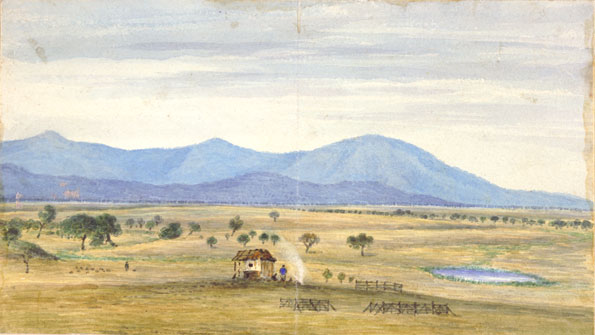 'Lambing station, Challicum', c1850
'Lambing station, Challicum', c1850
TLF ID R3309
This is a watercolour by Duncan Cooper that shows a lambing station at Challicum, a sheep run west of Ballarat in western Victoria. A man, who may be the hut keeper, is shown standing next to a slab hut and a campfire. In the distance, on the left of the painting, is the lone figure of a shepherd tending his flock. Several small sheepfolds (enclosures) made of hurdles (portable fences) have been positioned between the hut and a nearby billabong. The watercolour, which measures 10.2 cm x 17.4 cm, comes from a field album that Cooper called 'The Challicum Sketchbook'.
